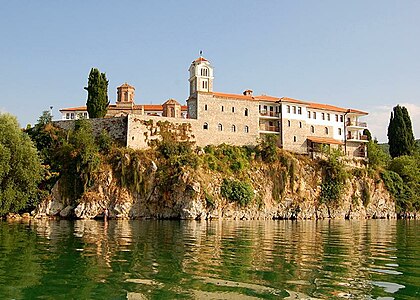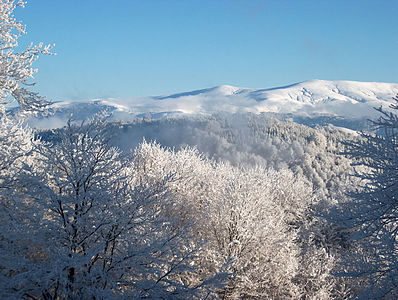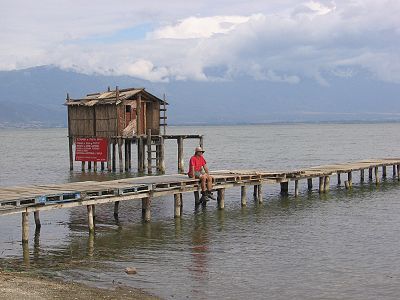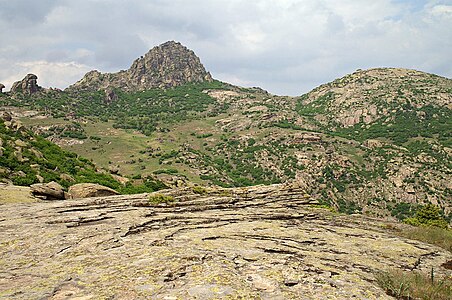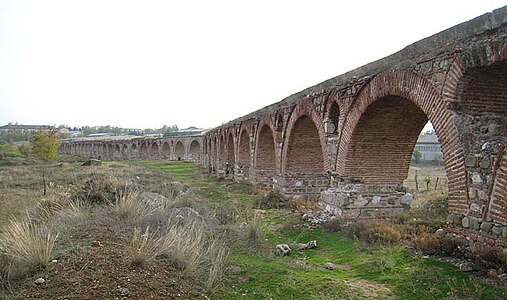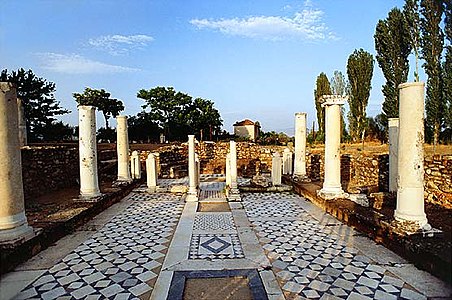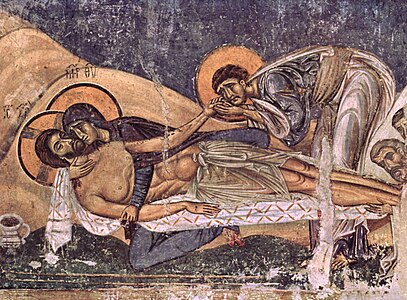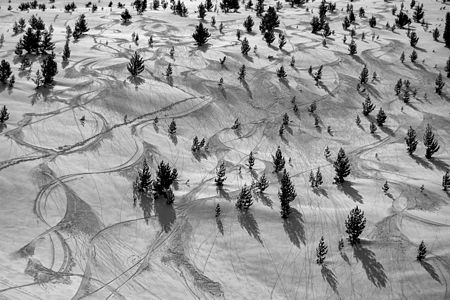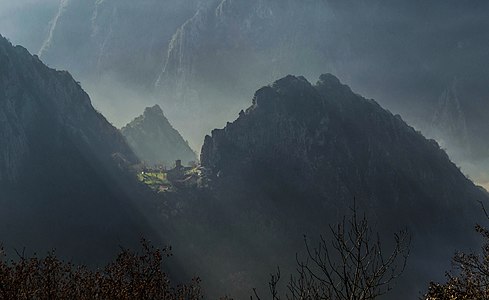Portal:North Macedonia
|
Orthodox Church of St. John at Kaneo, Ohrid, North Macedonia
The North Macedonia Portal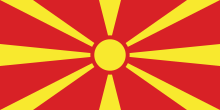 North Macedonia (/ˌmæsɪˈdoʊniə/ MASS-ih-DOH-nee-ə), officially the Republic of North Macedonia, is a landlocked country in Southeast Europe. It shares land borders with Greece to the south, Albania to the west, Bulgaria to the east, Kosovo to the northwest and Serbia to the north. It constitutes approximately the northern third of the larger geographical region of Macedonia. Skopje, the capital and largest city, is home to a quarter of the country's population of 1.83 million. The majority of the residents are ethnic Macedonians, a South Slavic people. Albanians form a significant minority at around 25%, followed by Turks, Roma, Serbs, Bosniaks, Aromanians and a few other minorities. The region's history begins with the kingdom of Paeonia. In the late sixth century BC, the area was subjugated by the Persian Achaemenid Empire, then incorporated into the Kingdom of Macedonia in the fourth century BC. The Roman Republic conquered the region in the second century BC and made it part of its larger province of Macedonia. The area remained part of the Byzantine Empire, but was often raided and settled by Slavic tribes beginning in the sixth century of the Christian era. Following centuries of contention between the Bulgarian, Byzantine, and Serbian Empires, it was part of the Ottoman Empire from the mid-14th until the early 20th century, when, following the Balkan Wars of 1912 and 1913, the modern territory of North Macedonia came under Serbian rule. (Full article...) Selected article -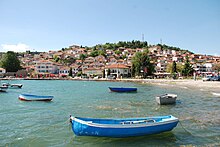 Ohrid (Macedonian: Охрид [ˈɔxrit] ⓘ) is a city in North Macedonia and is the seat of the Ohrid Municipality. It is the largest city on Lake Ohrid and the eighth-largest city in the country, with the municipality recording a population of over 42,000 inhabitants as of 2002. Ohrid is known for once having 365 churches, one for each day of the year, and has been referred to as the "Jerusalem of the Balkans". The city is rich in picturesque houses and monuments, and tourism is predominant. It is located southwest of Skopje, west of Resen and Bitola. In 1979 and in 1980, respectively, Ohrid and Lake Ohrid were accepted as Cultural and Natural World Heritage Sites by UNESCO. Ohrid is one of only 40 sites that are part of UNESCO's World Heritage that are Cultural as well as Natural sites. (Full article...) SubcategoriesMore in: North Macedonia and Macedonians
Did you know... ... that the Megalithic Observatory, Kokino is more than 3800 years old and it is placed on NASA's list of important ancient observatories [1] ... that the smallest ethno museum in the world is located only 5 km on the northwest of Tetovo, in the picturesque village of Džepčište and as such is listed in the Guinness Book of Records ... about the Stone town, situated by the Kuklica village in the Kratovo area. According to the sources, the stone figures that are called Dolls by the local population, date from the ancient prehistory... Selected image - The Church of St. John at Kaneo set on the shores of lake Ohrid is one of the most picturesque church settings in the Republic of Macedonia
Map of North MacedoniaWikiProjects
TopicsOther Photos of Interest
Related portalsAssociated WikimediaThe following Wikimedia Foundation sister projects provide more on this subject:
Discover Wikipedia using portals |



